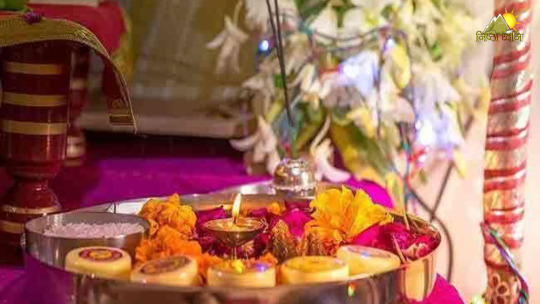#hindu shubh muhrut
Text
Jivitputrika Vrat 2022 : कब है जीवित्पुत्रिका व्रत , कैसे करे इस व्रत को
Jivitputrika Vrat 2022 : कब है जीवित्पुत्रिका व्रत , कैसे करे इस व्रत को
Jivitputrika Vrat 2022 – हिन्दू धर्म में व्रत त्योहारों को काफी अहमियत दी जाती है। पति के लिए , स्वयं के लिए , विवाह के लिए , संतान प्राप्ति , संतान सफलता के लिए ना जाने और भी कितने कारणों की वजह से हिन्दू धर्म में व्रत रखा जाता है। इन्ही व्रतों में से एक है जीवित्पुत्रिका का व्रत।
Jivitputrika Vrat 2022 : कब है जीवित्पुत्रिका व्रत , कैसे करे इस व्रत को
हिन्दू पंचांग के अनुसार यह व्रत…

View On WordPress
#hindu rituals#hindu shubh muhrut#jitiya vrat#jitiya vrat pooja#Jivitputrika Vrat 2022#Nistha Dhawani
0 notes
Text
The Significance of the 5 Days of Diwali
Do you know everything about the festival of lights?
1. Dhanteras
The festivities officially begins on the first day, which is known as Dhanteras. This day is solely dedicated to the worship and celebration of the goddess of wealth, goddess Lakshmi. People consider this day very auspicious (shubh) and buy something precious--specifically gold, silver, gemstones, new utensils and clothes. In the evening, earthen lamps are lit outside the houses to welcome the goddess.
2. Chhoti Diwali
The day between Dhanteras and Diwali is celebrated as Chhoti Diwali. It is also known is Naraka Chaturdasi and Roop Chaturdashi. With the festival of lights being just a day away, the streets and homes are already seen twinkling with fairy lights in a display of grandeur. According to Hindu mythology, on this day, Lord Krishna had defeated a demon king, Narakasur, who was the ruler of Pragjoytoshpur and had imprisoned 16,000 daughters of gods.
Lord Krishna destroyed the demon king, freed all the captive princesses and returned home victorious, and thus this day is commemorated to mark his triumph over the devil
3. Diwali/Deepawali
The third day is the day of the main festival, Diwali. Goddess Lakshmi and Lord Ganesha are worshipped in the evening during a subh muhrut (auspicious time), and proper aartis and bhajans are recited. It is believed that goddess Lakshmi enters homes and blesses devotees with good fortune and wealth on this day. People light diyas and candles and decorate their homes with fairy lights. After worshipping the gods, people visit their neighbours and relatives to exchange sweets and gifts.
4. Govardhan Puja or Padva
The fourth day is widely celebrated as Govardhan Puja in the northern states of India. It is believed that Lord Krishna defeated Indra by lifting the Govardhan Mountain. On this day, people make a small mound, usually of cow dung, and worship it. In the western states of India, this day marks the New Year as per their calendar and is celebrated as Bestu Varas.
5. Bhai Dooj
The fifth and last day of the festivities is the Rakhsabandhan-equivalent for sisters, and is known as Bhai Dooj. On this day, brothers visit their sisters and perform a 'tilak' ceremony. In this ceremony, a 'teeka' of rice and vermilion is applied on the brother's forehead, which is followed by aarti. Sisters pray for their brother's long lives while they promise to protect their sisters.
Bhai Dooj marks the end of the celebration of pure joy, radiance and lights--a festival that is celebrated with huge pomp and show across India.
0 notes